Science & Technology
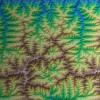 The National Science Foundation has awarded a highly competitive grant to a team of scientists building OpenEarthScape, a set of models and simulations to help anticipate changes in river flow, beach erosion, landslides and more.
The National Science Foundation has awarded a highly competitive grant to a team of scientists building OpenEarthScape, a set of models and simulations to help anticipate changes in river flow, beach erosion, landslides and more. When blind people share photos, there is an added risk they could unknowingly capture information considered private, such as a pregnancy test or a return address. To Assistant Professor Danna Gurari, this shouldn't have to be a concern.
When blind people share photos, there is an added risk they could unknowingly capture information considered private, such as a pregnancy test or a return address. To Assistant Professor Danna Gurari, this shouldn't have to be a concern. The machine-learning systems that help your phone recommend music, movies, news and more can be biased in ways that leave out artists from underrepresented groups or foster polarization. Professor Robin Burke is working to change that.
The machine-learning systems that help your phone recommend music, movies, news and more can be biased in ways that leave out artists from underrepresented groups or foster polarization. Professor Robin Burke is working to change that.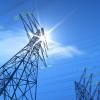 A Department of Energy award will help accelerate research into flow batteries, which will help make the electricity grid more reliable and sustainable.
A Department of Energy award will help accelerate research into flow batteries, which will help make the electricity grid more reliable and sustainable. After a year when the nation experienced a shortage of mechanical ventilators to help treat patients with severe COVID-19 complications, Professor Mark Borden's company Respirogen presents another treatment option: oxygen microbubbles.
After a year when the nation experienced a shortage of mechanical ventilators to help treat patients with severe COVID-19 complications, Professor Mark Borden's company Respirogen presents another treatment option: oxygen microbubbles. CIRES fellow and Associate Professor Jennifer Kay discusses the influence of Syukuro “Suki” Manabe, who this week was named a Nobel Prize laureate in physics.
CIRES fellow and Associate Professor Jennifer Kay discusses the influence of Syukuro “Suki” Manabe, who this week was named a Nobel Prize laureate in physics.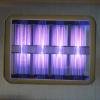 A specific wavelength of ultraviolet light is not only extremely effective at killing the virus that causes COVID-19, but is also safer for use in public spaces, finds new CU Boulder research.
A specific wavelength of ultraviolet light is not only extremely effective at killing the virus that causes COVID-19, but is also safer for use in public spaces, finds new CU Boulder research.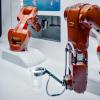 Social robots tend to be associated with futuristic science fiction movies, like Vision, the android from the Marvel Cinematic Universe, or C-3PO from Star Wars. In reality, they have rewarding applications in the present day.
Social robots tend to be associated with futuristic science fiction movies, like Vision, the android from the Marvel Cinematic Universe, or C-3PO from Star Wars. In reality, they have rewarding applications in the present day.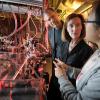 The U.S. National Science Foundation renewed STROBE for an additional five years for $22 million.
The U.S. National Science Foundation renewed STROBE for an additional five years for $22 million.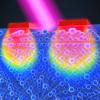 When you shrink down to very small scales, heat doesn't always behave the way you think it should. New findings from the nano realm could help researchers gain a better handle on the flow of heat in electronic devices.
When you shrink down to very small scales, heat doesn't always behave the way you think it should. New findings from the nano realm could help researchers gain a better handle on the flow of heat in electronic devices.


